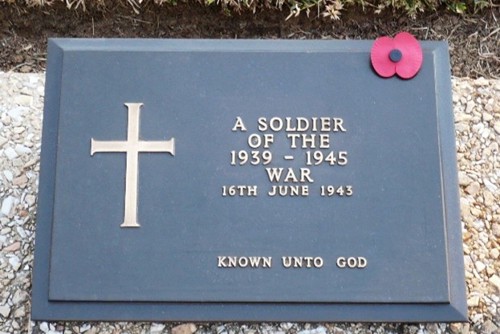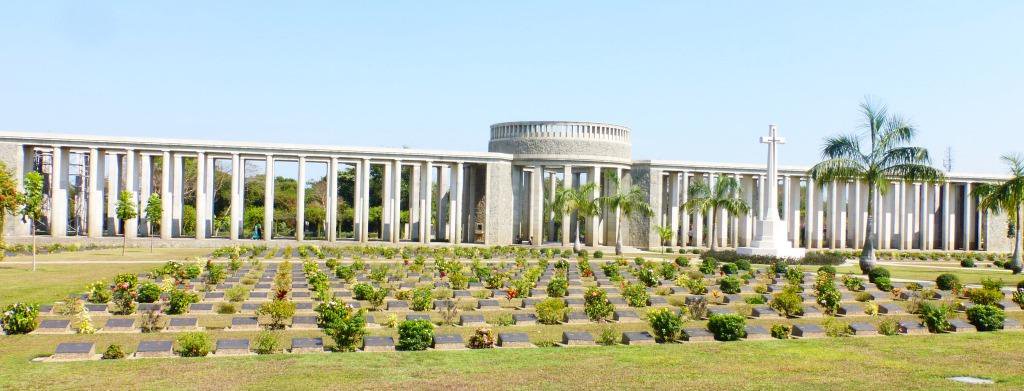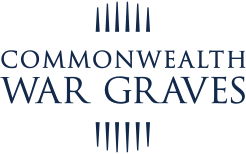12 March 2025
"Known Unto God"? Commonwealth War Graves' Ongoing Work to Identify the Unidentified
As the 80th anniversary of Victory in Europe (VE) Day approaches, Commemorations Case Officer Dr. Daniel Seaton discusses how the work to identify Commonwealth war dead of both World Wars continues to this day.
Commemoration at the Commonwealth War Graves Commission
Identifying our nameless headstones
 Image: The headstone of an unknown Second World War airman
Image: The headstone of an unknown Second World War airman
Alongside the Commonwealth War Graves Commission’s ongoing work to recover, identify and rebury the remains of soldiers from the former battlefields of the First World War and the Second World War, another strand of identification work continues daily.
Identification (ID) Cases are raised when, through a complex process of historical research and investigation, it can prove possible to identify casualties who are already buried in our cemeteries as unknown soldiers, sailors and airmen.
These nameless headstones are engraved with Rudyard Kipling’s timeless phrase “Known unto God”, though some may be ‘part-identified’ by way of the casualty’s regiment, date of death or rank.
Any ‘part-identification’ shown on the headstone for an unknown casualty usually stems from contemporary investigations conducted by the military authorities.
These investigations generally occurred either when the casualty was originally buried or, if the casualty was exhumed from their original burial place, when they were ‘concentrated’ into larger Commission cemeteries by Graves Concentration Units.

Image: A collage of images depicting the work of 48 GCU in Normandy, 1945: Searching for an isolated grave near Bayeux prior to concentration (top left); Major R. A. Pedder inspects items and effects found in the isolated grave (right); a casualty being reburied in a Commission cemetery following concentration (bottom left) (CWGC Archive 9/2/3/15).
Snapshots of these investigations are contained within the documents associated with each casualty in the care of CWGC and are held in our archive.
Such documents may include burial returns, exhumation reports, concentration documents and any other relevant surviving documentation.
These pieces of evidence can help to confirm vital clues to a casualty’s identity, such as any effects found buried with them, descriptions of their uniform, the map reference detailing exactly where a casualty was originally buried, who they were concentrated alongside and, in the case of exhumation reports, details of the remains themselves (height, hair colour, nature of injuries sustained, age estimate etc.).
When this information is considered alongside other historical sources - such as war diaries, unit histories, official maps, eyewitness accounts, any surviving investigatory correspondence and other sources - it is occasionally possible to exclude all but one candidate for the grave in question.
Any given candidate will have previously been commemorated on one of the Commission’s Memorials to the Missing. The level of evidence required, however, is very high, not least because the Commission does not permit the exhumation of Commonwealth casualties for the purposes of DNA testing.
This means that the documentary evidence must be both compelling and comprehensive – usually presenting significant new information which may not have been available to the investigating authorities at the time.
 Image: The memorial plaque of an unknown soldier
Image: The memorial plaque of an unknown soldier
Every year, CWGC receives ID case submissions from many committed and knowledgeable researchers.
Based across the globe, these keen individuals are driven by a common aim of identifying as many of the unidentified as possible.
In addition, CWGC and our member governments also raise and pursue cases internally, following particular investigations.
Cases have been submitted for graves maintained by CWGC across the world, from European ‘hotspot’ countries like France and Belgium, to further flung countries like Papua New Guinea, Myanmar and even Uruguay.
And, sadly, there is no shortage of graves to investigate: around 190,000 Commission headstones commemorate unidentified casualties of the First World War, while there are over 25,000 for the Second World War.
Many of these will remain forever unidentified due to the impossibility of narrowing a list of potential candidates for the grave down to a single individual.
However, identifications continue to be made where there is extensive clear and convincing evidence, and CWGC, in collaboration with the relevant government and military authorities, hold regular rededication ceremonies at our sites to mark these.
Successful cases will always be initially assessed by CWGC, before being handed over to the relevant government and military authorities for further investigation and an adjudication.
Following a successful case outcome, CWGC will liaise with the descendants of the identified casualties (where possible) to assist them with their choices for the new headstone commemorating their ancestor, particularly their selection of a personal inscription.

Image: A newspaper tribute penned by the fiancée of Private E.H.R. Hayes, whose rededication ceremony was held in 2024 (L); The installed headstone of Private Hayes, with personal inscription based on his fiancée’s tribute, as chosen by his descendants (R)
We often find that, through a search of historic newspapers held on digitised archive systems, ‘In Memorium’ tributes inserted by the casualty’s next-of-kin at the time can be located.
These can take the form of poems or simply a few words in remembrance of a loved one which can then be used for the new headstone. As such, tributes penned by a casualty’s nearest and dearest shortly following their death can frequently be found on their headstones following present-day identification.
In most cases, these families never had the chance to visit an identified final resting place for their loved one, so it means a great deal to their descendants to have their words reflected on a new headstone.
We also search for family headstones, where the now-identified casualty may have been commemorated, for a possible usable inscription for the Commission headstone.
All these steps are designed to ensure our being best placed to assist descendants reflect the chosen words or sentiments of their ancestors.

Want more stories like this delivered directly to your inbox? Sign up for our newsletter for regular updates on the work of Commonwealth War Graves, blogs, event news, and more.
Sign UpNo longer missing: Recently identified casualties of the Second World War
Due to the vast number of graves commemorating unidentified casualties of the First World War, alongside the improvement in grave registration and forensic investigation techniques during the Second World War, the majority of ID cases that the Commission investigates are for 1914-1918 casualties.
We do, however, continue to process and assist with the identification of Second World War casualties. Here are just two such stories:
Trooper Henry George Johnston, 1st Armoured Personnel Carrier Regiment, Royal Canadian Armoured Corps, died 17 January 1945
 Image: Trooper Henry George Johnston (courtesy of the Johnston Family)
Image: Trooper Henry George Johnston (courtesy of the Johnston Family)
Born in May 1915 in Alberta, Canada, Trooper Henry Johnston was listed as missing following his death on 17 January 1945.
Serving with the 1st Armoured Personnel Carrier Regiment as a gunner and radio operator, he was killed in the Dutch village of Baakhoven when his tank came under heavy shellfire while carrying British infantry troops.
As his final resting place was not identified at the time, Trooper Johnston, who was a husband and father of four children, was commemorated on the Commission’s Groesbeek Memorial in the Netherlands.
When a report was received from a dedicated and knowledgeable researcher, however, arguing that Trooper Johnston was buried as an unknown Canadian Soldier in Mook War Cemetery, further investigation commenced between CWGC and the Canadian Directorate of History and Heritage.
This investigation incorporated consulting CWGC documentation associated with the grave in Mook, cross-referring this with Johnston’s personnel file and other relevant historical sources relating to the action in which he died, as well as identifying any other possible candidates for the grave.
The investigation was able to establish that the grave in Mook had been concentrated from Baakhoven and was initially identified as belonging to Trooper Jake Dyck, also of the 1st Armoured Personnel Carrier Regiment, due to the presence of a silver bracelet belonging to him found with the remains.
It was soon established, however, that Dyck had survived the war and that the grave could not therefore be his. Upon exhumation of the remains prior to their concentration to Mook in 1947, it was noted by the investigating authorities that the casualty was wearing a Canadian pattern tank suit.
With no further indication of identity, the casualty was reburied in Mook as an unknown Canadian soldier who died on 21 January 1945 (the date that was written on the cross atop the original grave in Baakhoven).
No Canadian casualties, however, were listed on a Memorial to the Missing in the Netherlands with this date of death, meaning that 21 January 1945 was perhaps the date of burial rather than date of death.
 Image: Trooper Johnston's newly engraved headstone following the rededication ceremony (photo courtesy of Jimmy Hilgen)
Image: Trooper Johnston's newly engraved headstone following the rededication ceremony (photo courtesy of Jimmy Hilgen)
As such, the investigation considered all missing Canadian casualties who died around that period and was able to safely exclude all candidates for the grave besides Trooper Johnston on the grounds that the 1st Armoured Carrier Regiment were the only Canadians in the area in and around Baakhoven in January 1945.
Given the original connection between the grave and Trooper Dyck, who served in the same unit as Johnston, there was a clear and convincing case for Trooper Johnston, who was the regiment’s only missing casualty from the war.
With the case being accepted, the existing headstone on the grave was replaced with one commemorating Trooper Johnston and a rededication ceremony was held in September 2023.
Private Douglas Henry Dickson, 2nd Battalion, Devonshire Regiment, died 3 September 1944
Also previously commemorated on the Groesbeek Memorial was Private Douglas Dickson, who died when the Troop Carrying Vehicle (TCV) he was travelling in struck an American-laid mine in the French village of Genech.
This tragic accident resulted in the deaths of Private Dickson, whose unit was taking part in an advance towards Brussels, alongside two of his comrades: Private Frank Restell, also of the 2nd Battalion Devonshire Regiment, and Lance Corporal William Davey of the Royal Army Service Corps, who was driving the vehicle.
Following the incident, the regiment continued its rapid advance, meaning that it became possible that the casualties were buried by a third party rather than by those who knew and served with them.
The graves of only three casualties were concentrated from Genech post-war: the identified graves of Lance Corporal Davey and Private Restell, alongside that of an unidentified casualty of the 2nd Battalion Devonshire Regiment who died on 3 September 1944. These casualties were reburied in Plot 13, Row C, Graves 7-9 in London Cemetery and Extension, Longueval in France.

Image: The concentration report form, detailing the concentration of Restell, Davey and an unidentified third casualty from Genech, now identified as Private Dickson
Following further investigation between CWGC and the MOD’s Joint Casualty & Compassionate Centre (JCCC), it was established that no casualties of the 2nd Battalion Devonshire Regiment other than Private Dickson were listed as missing in the period around the unidentified casualty’s death.
Subsequent research, including consultation of the relevant war diaries, confirmed that the unidentified third casualty originally buried in Genech could only be Private Dickson, who was known to have died in that area on the date in question.
As such, a new headstone was erected for him alongside the graves of Restell and Davey, with the rededication ceremony being held in 2023.

Image: The now-identified grave of Private Dickson alongside that of Lance Corporal Davey
Our work continues
 Image: Wooden field grave marker for an unknown soldier killed in 1943, L'Esperance Farm, France (CWGC Archive)
Image: Wooden field grave marker for an unknown soldier killed in 1943, L'Esperance Farm, France (CWGC Archive)
Many visitors to CWGC cemeteries will have seen headstones commemorating casualties known only ‘unto God’ and wondered who these unidentified individuals might be.
It may accordingly come as a surprise to a significant number of these visitors that it is, on occasion, possible to put a name onto these headstones.
Even many decades after the First and Second World Wars, the work to achieve this is a constant process, engaged in by the Commission, independent researchers as well as governmental and military authorities. ,
All parties share a common aim: ensuring that the sacrifice of the dead is never forgotten, with the ongoing work to identify individuals being one method by which we set about this.
Our thanks to Dr Daniel Seaton and James Wallis for this article.

